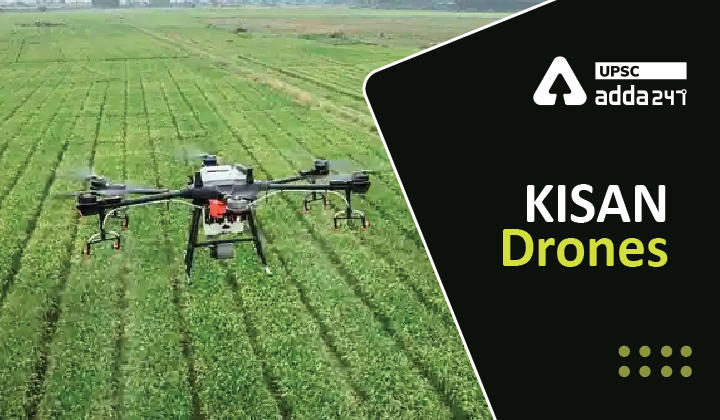Table of Contents
Kisan Drones: Relevance
- GS 3: Achievements of Indians in science & technology; indigenization of technology and developing new technology.
Kisan Drones: Context
- Recently, our Prime Minister has flagged off 100 kisan dronesin different parts of the country for spraying pesticides and other farm materials.
Kisan Drones: Key points
- Prime Minister expressed confidence that India’s rising capability in the drone sector will give the world a new leadership.
- He also said that the number of drones will soon be in thousands from over 200 now, leading to the generation of employment opportunities on a massive scale.
- The Prime Minister has also said that the government has already undertaken several reforms and policy measures to facilitate the rise of drone sector in India.
Kisan drones benefits
- Boost agricultural sector: Kisan Drones will be used to boost the agricultural sector in the country, by using kisan drones for crop assessment, digitization of land records and spraying of insecticides and nutrients.
- Transportation of food produce: Farmers can use drones to transport their produce like fruits, vegetables and flowers to markets in a minimal time, hence boosting their income.
- Aid new-age farming: Kisan drones will provide modern farming facilities in the 21st century, and will prove to be a milestone in the development of the drone sector in India.
- Chemical-free farming: Kisan drones also aims to promote chemical-free national farming.
- In the budget 2022, the finance minister said that chemical-free natural farming will be promoted throughout the country, with focus on farmers’ lands in 5-kilometre-wide corridors along the river Ganga in the first stage.
- Post-production benefits: Kisan drones will be supplied directly to the market with minimal damage, consuming lesser time, resulting in more profits to farmers and fishermen.
- Increase employment: ‘Kisan drones’ are the beginning of a new revolution, and will generate fresh employment and new opportunities for the youth.
Drones sector in India: Government steps
- Droneshave been used in the ‘Swamitva Yojana’ aimed at creating a record of land ownership in villages, and transporting medicines and vaccines.
- The Ministry of Civil Aviation (MoCA), in early 2022 notified a drone certification scheme to ensure minimum safety and quality requirements as it will boost indigenous manufacturing.
- In 2021, government has formulated a PLI scheme for drones and drone components with an allocation of Rs 120 crore spread over three financial years.
- The government has also made an ambitious target of making India the drone hub of the world by 2030.
- Government amended the guidelines of Sub-Mission on Agricultural Mechanization (SMAM) which envisages granting 100 per cent of the cost of agriculture drone or Rs 10 lakhs, as a grant for the purchase of drones by the farm machinery training and testing institutes, ICAR institutes, Krishi Vigyan Kendras and state agriculture universities.
- In 2021, the government came up with liberalised Drone Rules to create a ‘digital sky platform” which is a business-friendly single-window online system, with minimum human interference, where most of the permissions will be self-generated.



 TSPSC Group 1 Question Paper 2024, Downl...
TSPSC Group 1 Question Paper 2024, Downl...
 TSPSC Group 1 Answer key 2024 Out, Downl...
TSPSC Group 1 Answer key 2024 Out, Downl...
 UPSC Prelims 2024 Question Paper, Downlo...
UPSC Prelims 2024 Question Paper, Downlo...




